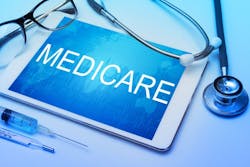One of the well-attended panel sessions at the Fall 2019 meeting of the National Association of ACOs (NAACOS) was called “Mastering Chaos: Achieving High Quality of Care in Multi-TIN/Multi-EHR ACOs.” Like the expert panelists at the Washington, D.C., conference, Tom Boggs, president of Bridges Health Partners, knows a thing or two about overcoming the complexity involved in building an ACO infrastructure around four health systems and 20 different EHRs.
Bridges Health Partners achieved nearly $8 million in savings in its first performance year in the Medicare Shared Savings Program (MSSP) Track 1+, which includes both upside and downside risk through potential shared savings and losses. Historically, only 15 to 20 percent of MSSP ACOs have performed well enough to earn shared savings in the first year. In 2018, only 37 percent of all ACOs were eligible to earn shared savings. So what was the key to their success?
Bridges Health Partners LLC was formed in 2017 by affiliates of Butler Health System, Excela Health, St. Clair Hospital, and Washington Health System in the Pittsburgh region. It includes employed and affiliated independent ambulatory provider groups in a clinically integrated network.
Boggs previously served as president and CEO of Healthcare Solutions Network, an ACO joint venture of TriHealth and St. Elizabeth Healthcare in the Cincinnati region. So he had some experience with joint venture ACOs when he joined Bridges in February 2019, although the Cincinnati health systems were both using the same EHR, Epic. He said it was unusual for four health systems to come together in this way. “They have a track record of working together collaboratively. I think wanting to remain independent, their decision was to come together to do something in the population health/ACO arena, because these things involve very large fixed-cost investments,” he said. “So the four systems talked to each other and said why would we do this times four, when doing something collectively could really benefit us in terms of scale and mitigate the outliers through more lives.
Akin to other ACO leaders, Boggs said one of the keys to population health success at Bridges is getting actionable data in the hands of physicians. But he said they chose to keep it simple and focus initially on a few key metrics as it rolled out a NextGen population health analytics platform.
“We were standing up the population health tool from NextGen in 2018 while we were going through the year one MSSP participation,” Boggs said. “We picked a few things to work on that we thought would be helpful toward achieving shared savings, including annual wellness visits. We were able to use the claims data along with some of the clinical data we had to help prepare our providers for annual wellness visits. We had them execute those at a 50 percent rate, which is far above the national average. We also focused on transitions of care, by having a care coordination team reach out to patients at time of discharge to break down healthcare silos.”
Having multiple EHRs does make the analytics and reporting more challenging, Boggs said.
In Cincinnati, the two health systems were in an Epic environment. There wasn’t a lot of integration necessary other than incorporating claims data, he noted. “Here it is very different. We are dealing with multiple EMRs, and we are not going to force physicians to change their electronic medical record in their practice. Even if physicians do have the same EMR, they can document in different places. That whole process is very complex. It is where the rubber meets the road. That is one of the reasons we had to look for a EMR-agnostic vendor and NextGen checked that box for us. It is still a big lift. We are still going through it, but we have a significant amount of clinical data and claims data married up.”
The analytics software offers both an ACO-level view as well as practice- and physician-level detail in terms of gaps of care.
Bridges’ website shows a list of affiliated skilled nursing facilities (SNFs). Boggs said building those relationships has been one key to success. “With the program we are in, we are allowed to use what is called 3-day waivers for those affiliated SNFs. (The SNF 3-Day Rule Waiver waives the requirement for a 3-day inpatient hospital stay prior to a Medicare-covered, post-hospital, extended-care service for eligible beneficiaries.) “If a patient is in the hospital but really is more appropriate to be in skilled care, we can transfer them directly out of the hospital to the SNF, and save an admission on the acute hospital side, and get them into the right care setting with our partner SNF facility, so that has been big,” Boggs said. “That is one of the things that has really driven some of our reduction in spending and improvements in quality. We reduced readmissions as well. That SNF waiver piece had a large impact. We are working to create that high-performing post-acute care network and figuring out who are our partners that buy into this new payment framework.”
With its initial success in the MSSP program, Bridges has now signed several Medicare Advantage contracts and began its first foray into the commercial market on July 1. “We have had a very measured approach on which populations we were going to tackle and sequencing which ones we brought on,” Boggs explained. “That was one of the items early on in my tenure here, looking at the strategic plan and revisiting the timing and sequence of our payer partnerships.”
Boggs said another key to success is to make sure physicians embrace the change. “We have 30 physicians who are involved in our governance structure and are committed to it,” he added.
Returning to the population health and data analytics platform, Boggs recommends making sure you are not overinvesting in the start and buying a system that is exorbitant. “Pick a few things to work on initially, he said. “Keep it simple and execute well; that will get you far better results than trying to boil the ocean.”


